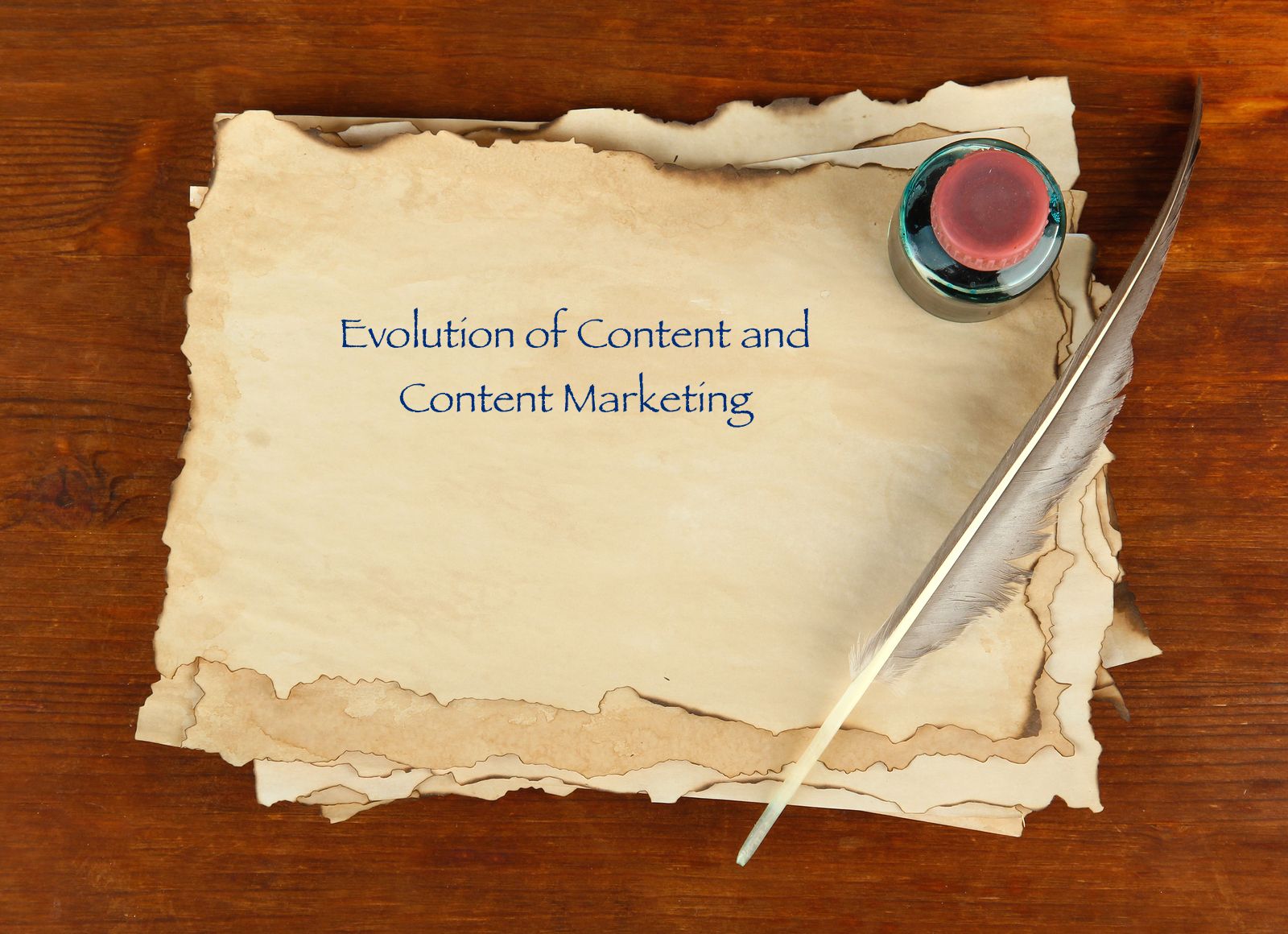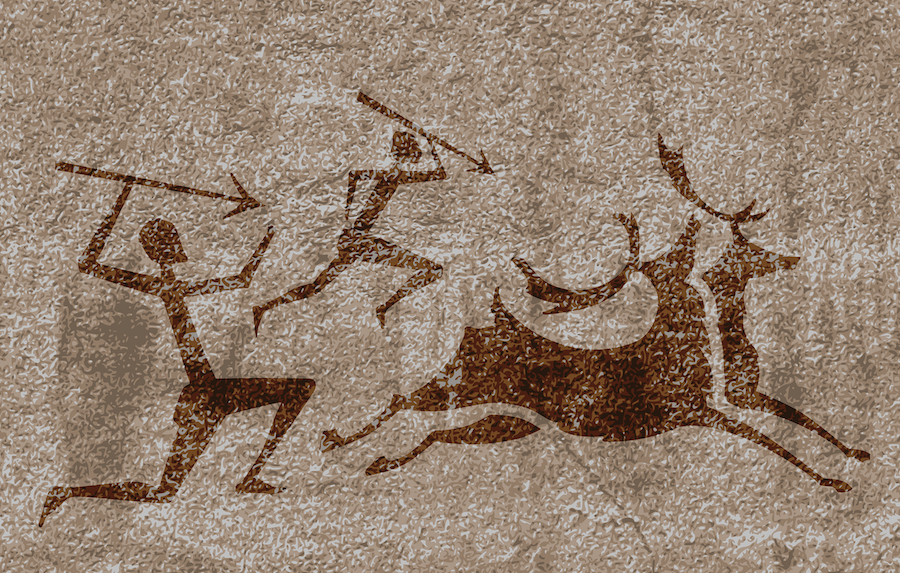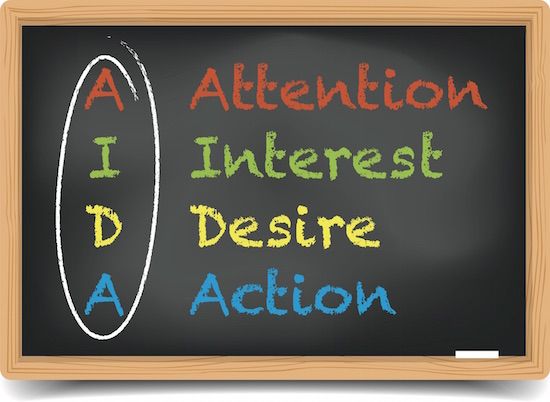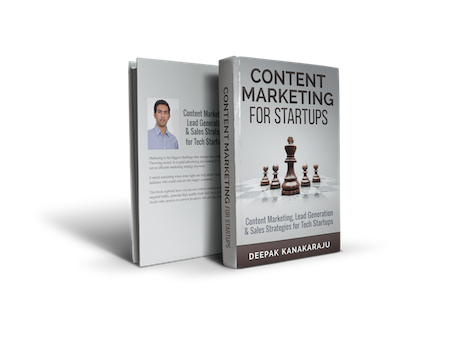The Evolution of Content & Content Marketing
This article is a chapter from my book Content Marketing for Startups.
Evolution of Content & Content Marketing is the most important chapter in this book. Here, we take a look into the evolution of language, communication, memes and content. It is important that we take a moment to understand the evolution of content. Understanding content from the ground up helps us become masters in content marketing and helps us get an edge over our competition.

I am going to turn back the clock by a few thousand years where humans mostly lived in tribes as hunters-gatherers. I will show you how content came into existence. We will find out why content is the epicentre of marketing and how marketing couldn’t exist without content.
How Humans Dominate Planet Earth
When we watch Discovery channel, we can obviously see that there are hundreds of species bigger, stronger and faster than us. But in the end we are the ones dominating planet earth.
That’s because the ability of other animals, fishes and birds to think and think collectively for their own good is limited! Language & communication among individual minds is a key enabler in our ability to think collectively.
We can communicate with each other so well that we become a whole new organism. Each human being becomes a small part of a big system. We call this system – civilization. We formed tribes, kingdoms and countries with this ability. Everything is built with language and communication as the foundation.
Language & Communication Evolves into Content
Language is a powerful tool, and it connects human minds. But for most of our history, we had only real-time verbal and nonverbal communication.
Humans understood that communication cannot be limited to the present moment. Ideas and concepts should be able to transcend time and place.
There has to be a medium through which content can be “recorded” and “played back” again.
That’s when Memes originated. Memes are the earliest forms of content in human history. They originated after 10,000 BC.
A meme is “an idea, behaviour, or style that spreads from person to person within a culture.” A meme acts as a unit for carrying cultural ideas, symbols, or practices that can be transmitted from one mind to another through writing, speech, gestures, rituals, or other imitable phenomena. – Wikipedia
Written form of communication (Content) evolved from Memes and is the driving force of civilization & human development. We still pass on ideas from one mind to another but in a more efficient way.
“The invention of writing enabled complex societies to arise: record-keeping and libraries served as a storehouse of knowledge and increased the cultural transmission of information. Humans no longer had to spend all their time working for survival—curiosity and education drove the pursuit of knowledge and wisdom.” – Wikipedia
Today, In the digital world we have advanced medium to distribute content such as blogs, videos, podcasts, ebooks and so on. When technology enables us to store and transmit information in a faster and easier way, it directly impacts the speed of our evolution.
Useful Content Attracts Attention
Content has been a key component in human development and an enabler of civilization. But there is another key feature of content that interests a marketer. Content attracts attention.
Even the simplest forms of useful content attract attention. For example, the following cave drawing communicates the idea that men could hunt deers with spears. This was probably the first form of content recorded through the medium of a cave wall.

For a tribe in 5,000 BC, this could be a very useful idea. They may never have thought about the fact that one could use spears to hunt down deers. People are going to pay attention to it.
Now imagine, if someone makes spears all day for a living, how and where could he sell it? He can set up his small shop in front of the cave with the unique drawing, and he would be getting targeted customers to look at his products! He will sell more goods than a person who is selling spears somewhere else.
He will make effortless sales because he is selling it to the right people, at the right time at the right place. That’s the unfair advantage of content marketing even in 5,000 B.C. 🙂
Simplifying Content Marketing
The very purpose of this chapter was to simplify content marketing.
“Simplicity is the ultimate sophistication.” – Leonardo da Vinci
Anyone can present a complex plan for content marketing with 100 different tips, tricks, strategies and flow charts. But such tips and tricks fade away with time and are not useful with the changing landscape of marketing.
Fundamentals and basic concepts never change. If you understand the basics you can develop your own strategies and tactics on demand. That’s why I have tried to make it simple first before building on it.
“If you can’t explain it simply, you don’t understand it well enough.” – Albert Einstein
Content Marketing in Two Steps
- Attract the attention of target customers using relevant, useful & quality content.
- Use that attention to convert prospects into customers through interest, desire and action.
Content and the Marketing Funnel
Content marketing wouldn’t make much sense if it does not fit into the well known marketing funnel AIDA. (Attention, Interest, Desire & Action).
Content is a tool to attract attention of prospects. However there is no use of attracting attention (generating traffic) if that attention cannot be used to convert prospects into customers.

That’s why this book is not just about attracting attention with content but also about converting prospects into customers. Here’s a glimpse of what you will find in this book. The book is divided into two major parts Attracting Attention & Conversion.
Part 1: Attracting Attention
- Identify your target market, know what your target market wants to learn or read about
- Create content and publish them in different formats, promote your content to reach your prospects
Part 2: Conversion (Interest, Desire and Action)
- Convert your first time visitors into leads (interest generation)
- Generating Leads
- Different Types of Leads
- Lead Scoring and Segmentation
- Nurture your Leads (intensifying desire)
- Drip Email Marketing
- Content Marketing for Existing Leads
- Convert Leads into Customers (triggering action)
- Sales Pages, Landing Pages & Copywriting
- Inside Sales
Now that I have shown you the road map for content marketing, it is time to start walking down this path. I have gone down this path a few times and I believe I am totally capable for guiding you through it. Let’s start our journey to reach content marketing stardom. Are you ready?

P.S. If you liked this chapter you should read my book: Content Marketing for Startups.
